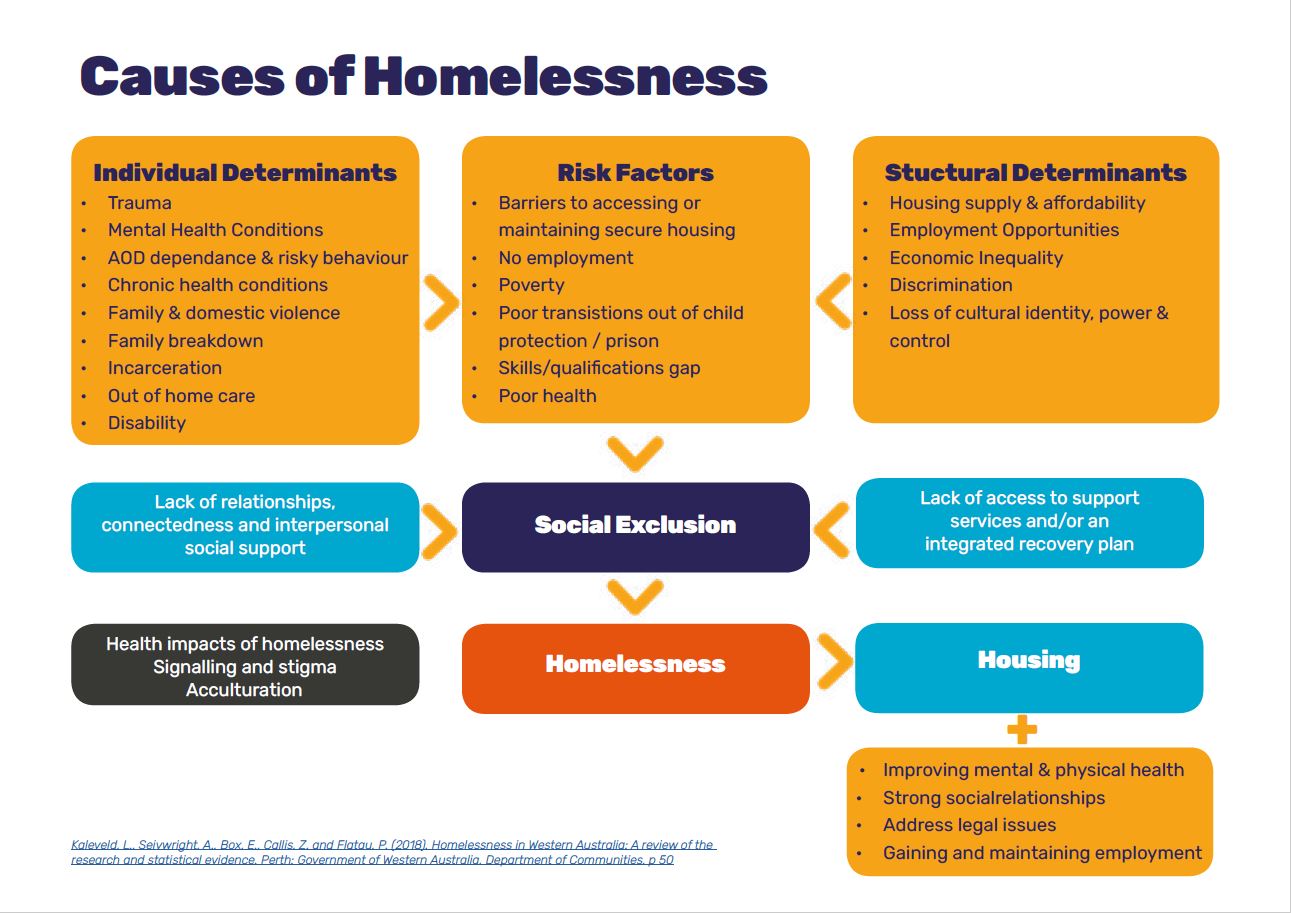Drivers of Homelessness
The causes of homelessness are complex and include a broad range of individual and social factors.
Individual factors like trauma, mental health conditions, chronic health conditions and family and domestic violence can increase the likelihood of someone experiencing homelessness. Structural factors like housing supply and affordability, discrimination and employment opportunities also increase someone’s risk of homelessness.
In WA in 2021-2022, for example, the top three reasons people sought assistance from specialist homelessness services were:[2]
- Domestic and family violence
- Financial difficulties
- Housing affordability stress
For people with complex needs or reoccurring homelessness, Shelter WA endorses the principles of Housing First. Taking a Housing First approach involves providing housing upfront without conditions while also providing individualised, recovery-focused, wrap-around support services where needed.
[1] https://assets.csi.edu.au/assets/research/Homelessness-in-Western-Australia-Report.pdf
[2] https://www.aihw.gov.au/getmedia/68c79d3d-93f9-4356-9fa0-809750192d9a/HOU331_Factsheet_WA.pdf.aspxheet.pdf.aspx
Individual determinants
The individual drivers of homelessness can be co-occurring and/or interconnected, particularly when it comes to the experience of trauma. Trauma is thought to be an underlying factor in all individual drivers of homelessness.
‘People are more likely to experience traumatic events while homeless, and experiencing homelessness can worsen any underlying trauma as well as intensify the vulnerabilities that contributed to a person’s homelessness initially.’ Homelessness in Western Australia: A review of the research and statistical evidence
Structural determinants
Structural determinants relate to the conditions in which people can access the resources required to obtain and maintain secure housing and support.
‘Resources include financial, educational and employment opportunities, and what is required to meet the cost of housing and there are two dimensions in this interaction: the cost of housing and low income and wealth to meet the cost of housing resulting from poverty and labour market disadvantage.’ Homelessness in Western Australia: A review of the research and statistical evidence
Poverty is a key driver of homelessness. Economic inequality and lack of employment opportunities impact on people’s ability to sustain and maintain a home. The provision of safety nets, such as adequate income support, is paramount to ensure people have adequate financial resources to maintain secure housing. So too is access to social and affordable housing options, and access to services as required. Addressing the structural drivers is key if we are to end homelessness.
For further information please visit https://www.wa.gov.au/system/files/2021-06/homelessness-in-wa-report.pdfhomelessness-in-wa-report.pdf
